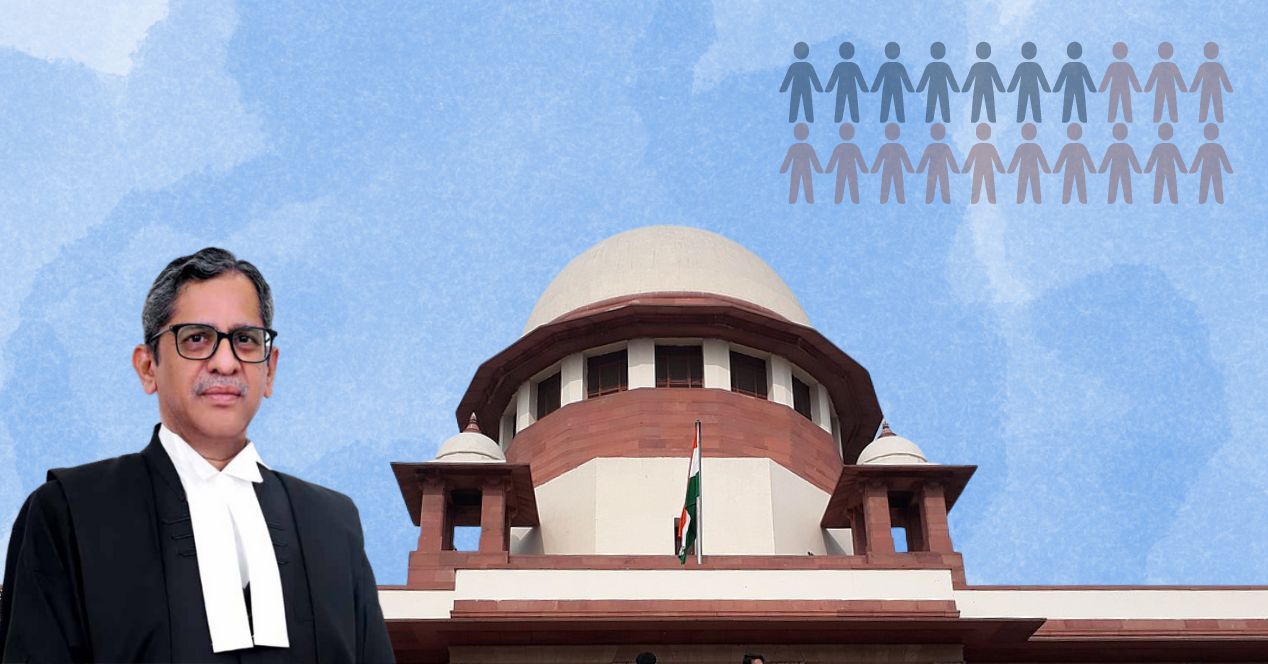Analysis
‘The battle of backwardness within backwardness’
The top court's reconsideration of a 20-year-old judgement could be pivotal in clarifying that caste can also be a class category

On Thursday, a seven-judge Constitution Bench of the Supreme Court reserved judgement in Davinder Singh v State of Punjab. The issue in the case is a critical one in affirmative action discourse—are sub-classifications within the reserved Scheduled Caste (SC) category permissible and can states create their own?
Two decades ago, in Chinnaiah v State of Andhra Pradesh (2004), a five-judge Bench of the Court had struck down a law that allocated 15 percent reservation for SCs amongst four sub-groups. Then, the Court held that “Scheduled Castes form a class by themselves and any further sub-classification would be impermissible while applying the principle of reservation.”
Another five-judge bench in 2020, which referred the matter to the seven-judge bench, took the view that states could take steps to represent those who were inadequately represented. “The entire basket of fruits cannot be given to (the) mighty at the cost of others under the guise of forming a homogeneous class,” they said.
In the present matter, the Union and several state governments that are typically at loggerheads came together to defend sub-classification. Over the years, they said, the Court’s jurisprudence had evolved to recognise the more backward amongst backward classes.
The shiny arrow in their quiver of arguments was the judgement in Indira Sawhney (1992), where a nine-judge bench reasoned that sub-classification within a backward class was possible under Article 16(4) and upheld reservations for Other Backward Classes. That was also the case where the Court emphasised that the government must exclude the ‘creamy layer’ from the benefits of reservations. More recently, in Jarnail Singh (2018), the Court extended the ‘creamy layer’ exception for reservations in public employment promotions for the SC and ST communities.
In Davinder Singh, the petitioners’ arguments extend the ‘creamy layer’ logic to SCs in public employment and education: if certain castes were more backward than others, they qualified as a backward class under Article 16(4). But the concept of ‘creamy layer’ itself hasn’t gone unchallenged. Professor Anup Surendranath, for instance, has argued about the “limited imagination” of basing sub-classification on the creamy layer logic—his contention is that mere upward economic mobility for a few groups does not compensate for the social discrimination suffered for centuries.
The respondents, on their part, contended that castes cannot constitute a class. But the petitioners and the Bench seemed convinced that the reasoning in Indra Sawhney leads to the conclusion that a caste can become a class if it is inadequately represented.
The Court was at pains to clarify that the tangible question was limited to the constitutional validity of sub-classification. But, as observers, it would be limiting to overlook the long shadow of why reservation is necessary in the first place. No answer can ignore the centuries of history—rooted in discrimination and exploitation—which have blurred caste and class identities. The petitioners touched on this wider history when they said reservation was not an act of “benevolence” or “charity”—it was “constitutional atonement”.
On the final day of hearings, Chief Justice D.Y. Chandrachud, while acknowledging the “battle of backwardness within backwardness,” cautioned that authorities had to be careful about not leaving out groups while granting benefits to the most backward sections. “Otherwise this becomes a very dangerous trend,” he said, “the idea is not to allow popular politics to play out in grant of reservation…”
But that sounds like wishful thinking at a time when reservation remains a political touchpoint. Considering these boundaries have always been etched in sand, how the CJI’s Bench draws these constitutional contours could be pivotal.
This article was first featured in SCO’s Weekly newsletter. Sign up now!



